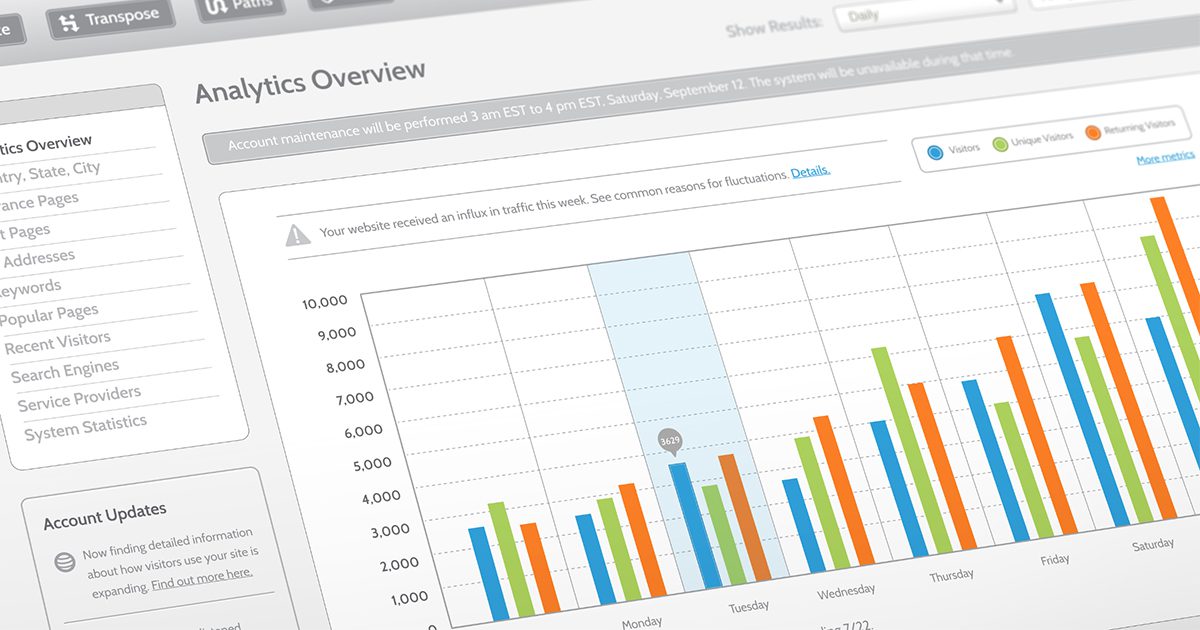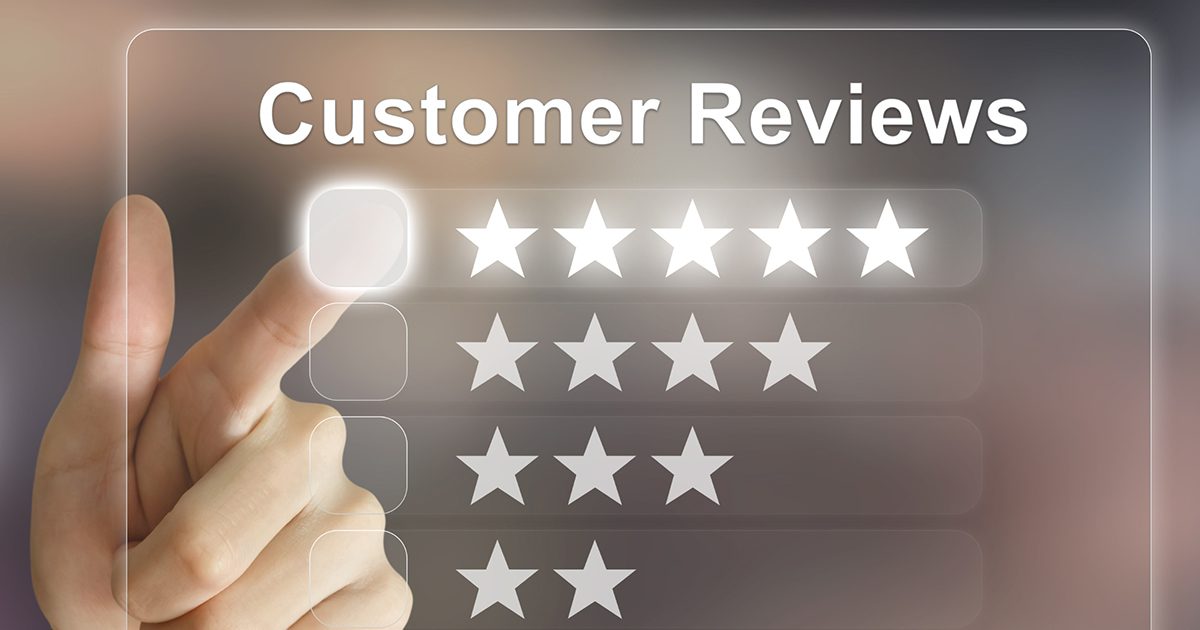Most ecommerce business owners spend significant time and resources drawing traffic to their websites. After all, more traffic means more sales, right? Ideally, yes. But only if you can convert visitors into actual paying customers. That’s where conversion rate optimization comes in.
CRO marketing helps increase your bottom line by encouraging customers to take a desired action, leading them down the conversion path, and ultimately helping you reach your business goals, such as newsletter subscribers or purchases.
What is Conversion Rate Optimization?
Conversion Rate Optimization (CRO), or CRO Marketing, refers to the strategies used in digital marketing to increase the percentage of website visitors who take a desired action, such as filling out a form, signing up for a newsletter, or making a purchase.
Why is CRO marketing important? The main goal of CRO is to make the most out of your existing web traffic by enhancing your website and its content to increase user engagement and encourage them to take a desired action.
What are the Components of a Conversion Rate Optimization Strategy?

CRO includes techniques such as:
- A/B testing: where two versions of a web page or digital ad are compared to see which one performs better.
- Improving user experience (UX): creating a convenient user experience through better navigation, faster loading times, and more compelling calls-to-action (CTAs)
- Analyzing data: analyzing web analytics, gathering user feedback, and employing usability testing to refine the conversion process.
How CRO Marketing Helps Improve Your Site’s Conversion Rate

A good CRO marketing strategy helps increase the percentage of website visitors who take desired actions on a website, such as making purchases, signing up for services, or subscribing to newsletters. By optimizing a website for specific conversions, businesses can increase certain outcomes without necessarily increasing traffic.
Example:
- 1,000 people visit a website each day. The site has a conversion rate of 3% (30 transactions) for sales of a $100 item.
- 1,000 people visit the SAME website but with a conversion rate of 8% (80 transactions) for sales of the same $100 item.
- Over the course of a month, increasing the conversion rate by 5% leads to 1,500 additional sales or $15,000 in added revenue.
As you can see, conversion optimization—when done well—provides a significant return on investment by maximizing the existing traffic already coming to your site, providing more value from your current marketing efforts, and attracting traffic that is most likely to convert.
Key Metrics and KPIs in CRO

To understand if your CRO marketing strategy is working, you need to review certain key performance indicators (KPIs).
Here are some of the conversion data metrics and KPIs commonly used in CRO:
- Conversion Rate: This is the primary metric for CRO and measures the percentage of visitors who complete a desired action on a site. It’s calculated by dividing the number of conversions by the number of visitors and multiplying by 100 to get a percentage. (I.e. 1,000 site visitors with 50 conversions is a conversion rate of 5%.)
- Bounce Rate: The percentage of visitors who navigate away from the site after viewing only one page. A high bounce rate might indicate that the landing pages are not relevant or engaging enough to keep visitors’ attention. The lower the bounce rate, the better the engagement.)
- Average Session Duration: This metric indicates the average amount of time visitors spend on your site. Longer sessions suggest more engaging content or more interest in your offerings.
- Pages Per Session: Measures the average number of pages a website visitor views during a session. More pages per visit can indicate higher engagement.
- Traffic Sources: Understanding where your traffic comes from (e.g., organic search, social media, email marketing) helps determine which channels are most effective at bringing in visitors who convert.
- Click-Through Rate (CTR): This measures how often people who see your ad or any call-to-action on your site end up clicking on it. A low CTR might indicate that your messages are not compelling or not well-targeted.
- Cart Abandonment Rate: This metric is particularly important for e-commerce sites, and tracks how many users add items to their shopping cart but do not complete the purchase. High abandonment rates can signal problems with the checkout process or pricing.
- Cost per Conversion: This helps you understand the cost-effectiveness of your marketing efforts by calculating how much you spend to get one conversion.
10 Effective Conversion Rate Optimization Strategies

1. Conducting Comprehensive Website Audits
A great place to start when building a CRO strategy is by doing a thorough audit of your website. Review all aspects of your website to identify both technical flaws and user experience issues that may be leading to a low conversion rate. An audit covers everything from checking the site’s loading speed, responsiveness, and accessibility to evaluating content relevance and SEO performance. The goal is to pinpoint barriers that might be hindering conversions and improve overall website performance.
- Technical Audit: assesses the technical health of your site, including loading times, identifying broken links, and crawl errors.
- SEO Audit: evaluates how well your site is optimized for search engines by reviewing keyword optimization, meta tags, and descriptions.
- Content Audit: analyzes the quality, relevance, and engagement level of your website’s content and assesses whether the content meets your audience’s needs.
- User Experience (UX) Audit: looks at how users interact with your website, focusing on ease of navigation, site layout, style consistency, and overall user journey effectiveness.
- Accessibility Audit: checks that your site is accessible to individuals with disabilities, a practice that’s both a best practice and a legal requirement in some instances.
2. Understanding the Behavior and Intent of Your Website Visitors
You can use tools like Google Analytics, heatmaps, and user session recordings to gain insights into how visitors interact with your site, what grabs their attention, and potential issues like unexpected checkout barriers.
This helps pinpoint areas for improvement, such as clarifying information or adding FAQs to frequently visited pages. Once you have a good understanding of current user behavior, you can create a better user experience that aligns with the expectations of your website visitors.
3. Creating Compelling Call-to-Actions (CTAs)
A call-to-action is a prompt encouraging your audience to take a specific action, such as signing up, buying a product, or learning more.
A compelling CTA not only uses specific language but should also be visually appealing and draw the user’s attention. Effective CTAs may have contrasting colors, dynamic shapes, or engaging motion graphics, and they communicate clear, action-oriented messages like “Download My Free eBook Now” or “Get Started with Your Free Trial.”
Tip: Place CTAs strategically in high-traffic areas or immediately after relevant content to enhance conversion rates.
4. Simplifying the Conversion Process For Your Site Visitors
In our instant gratification world, users want to take an action or make a purchase with as little steps as possible. Eliminating unnecessary steps in the checkout process or adding various payment methods make it easier for users to complete actions. For example, Shop Pay saves a user’s contact info and payment details securely, which allows for faster and more convenient transactions in future purchases. Customers who use Shop Pay can make a purchase with just one click.
There’s also a psychological component to the conversion process. Understanding and addressing psychological barriers—such as ensuring transparent pricing, clarifying shipping costs, and providing security reassurances during checkout—can alleviate user anxiety and build trust, leading to an online purchase.
5. Optimizing Website Design and Layout

A well-designed website significantly enhances user experience. An intuitive layout, readable fonts, attractive colors, and relevant images make navigation seamless and information readily accessible. The website layout should naturally guide visitors through the content and options available, turning existing website traffic into paying customers.
Here are a few ways to optimize website design and layout to increase your conversion rate:
- Logically Grouped Content: Organize related content together to improve readability and navigation.
- Clear Differentiation Between Sections: Use design elements like color, spacing, and headers to distinguish different sections clearly.
- Predictable Structure: Maintain a consistent structure that users can quickly become familiar with.
- Consistent Menu Across All Pages: Ensure the navigation menu is uniform on every page to aid in seamless site exploration.
6. A/B Testing and Experimentation to Increase Conversions
A/B testing is another important CRO strategy. It compares two versions of a landing page or advertisement to determine which performs better in terms of conversions. This data gives you a good idea of which headlines, CTA buttons, images, or page layouts lead to a desired action.
Regularly updating your website based on this feedback helps make sure your site is responsive to user needs and effectively resonates with your target audience.
7. Personalization and Targeting
There are a number of CRO tools available that tailor the user experience by delivering personalized content based based on factors like a user’s location, browsing history, or past purchases. Delivering personalized content and experiences can increase conversion rates by making users feel understood and valued.
Machine learning models can predict user behavior and dynamically adjust content in real-time, enhancing engagement through relevance and timeliness. Similarly, predictive analytics uses historical data and algorithms to forecast future user behaviors so businesses can create a conversion funnel that more effectively drives conversions.
8. Utilizing Social Proof and Testimonials to Boost Conversions

Social proof can be incredibly powerful in swaying purchasing decisions. Think about your favorite bloggers or social media influencers—if you trust them, you’re more likely to purchase an item or service they recommend. The same goes for social proof and testimonials on your website. They tap into human psychology to enhance conversion rate by boosting buyer confidence and influencing decisions.
Seeing positive feedback from others builds trust and credibility, offering validation that reassures potential customers of a product’s quality and reliability, which reduces perceived risk. It’s called the “bandwagon effect,” where a product’s popularity attracts additional buyers. (I.e. the recent Stanley craze.)
Tip: Incorporate visuals like photos or videos with testimonials to make the feedback more relatable and tangible.
9. Addressing User Concerns and Objections
In addition to providing social proof, anticipating and addressing common user objections also leverages human psychology to smooths the path to conversion and enhance conversion rate optimization. By addressing potential concerns upfront, a business builds trust with potential customers, showing consideration for their needs and hesitations.
This is especially important in competitive or high-stakes markets where trust can significantly influence purchasing decisions. Many potential conversions are lost due to unanswered questions or unresolved concerns that create friction in the purchasing process. If you can proactively address these issues—related to product quality, return policies, payment security, or service effectiveness—it will help eliminate barriers that prevent users from completing purchases.
10. Implementing Trust Signals and Security Measures
Similarly, implementing trust signals and security measures can enhance user trust and confidence in the security of their transactions.
Here are a few ways these measures help increase conversion rate:
- Boosting Consumer Confidence: Displaying trust signals like SSL certificates, secure payment gateways, and privacy seals reassures users that their personal and payment information is safe, encouraging them to complete purchases without hesitation.
- Reducing Cart Abandonment: Security concerns are a common reason for cart abandonment. By ensuring and highlighting strong security measures on transaction pages, businesses can lower abandonment rates and improve conversions.
- Enhancing Brand Credibility: Strong security measures elevate a brand’s credibility and trustworthiness. This not only attracts new customers but also helps retain existing ones, fostering repeat business.
- Improving SEO Rankings: Search engines favor secure websites in their rankings. Using HTTPS ensures a secure connection, which is a positive factor for SEO.
CRO Marketing Tools and Resources for Conversion Optimization

Leveraging the right tools and resources can make all the difference in the effectiveness of your conversion rate optimization efforts. CRO tools help you gather data, analyze behavior, test hypotheses, and ultimately improve the conversion rates on your website.
Here’s a list of some popular tools and resources across different aspects of CRO:
- Analytics and Data Collection
- Google Analytics: A foundational tool for tracking website traffic, user behavior, and conversion metrics.
- Mixpanel: Offers advanced user analytics with detailed tracking of user interactions on your site.
- Hotjar: Provides heatmaps, session recordings, and surveys to understand user behavior and feedback visually.
- A/B Testing
- Optimizely: One of the leading platforms for experimenting with A/B testing, multivariate testing, and personalization.
- VWO (Visual Website Optimizer): Offers A/B testing, split testing, behavioral targeting, and other optimization tools.
- User Feedback and Surveys
- SurveyMonkey: Allows you to create and distribute detailed surveys to gather feedback directly from users.
- Typeform: Known for creating interactive and beautifully designed surveys that can improve engagement and completion rates.
- Heatmaps and User Behavior Analysis
- Landing Page Optimization
- Conversion Funnel Analysis
- ClickFunnels: Helps businesses to design and implement sales funnels that drive users towards conversion.
- Funnel.io: Monitors and manages marketing data and performance across different stages of the sales funnel.
- Personalization
- Dynamic Yield: Offers advanced solutions for web personalization, automated personalization, and real-time messaging.
- SEO and Content Optimization
Common Mistakes to Avoid in Conversion Rate Optimization Marketing
Conversion Rate Optimization is an ongoing process that requires constant refinement to find what’s working and what isn’t working. As you continue to perfect the process, be mindful of common mistakes that can derail your efforts. Avoiding these mistakes can save you time and resources, and help you achieve better results.
Here are some common mistakes to avoid in conversion rate optimization:
- Not Defining Clear Objectives: One of the biggest mistakes in CRO marketing is not having clear, measurable goals. Without specific objectives, it’s challenging to determine what success looks like and whether your optimization efforts are effective.
- Ignoring Mobile Users: In today’s digital landscape, a significant portion of web traffic comes from mobile devices. Neglecting the mobile user experience can lead to significantly lower conversion rates. Make sure your website is responsive and optimized for mobile.
- Skipping A/B Testing: Jumping straight to conclusions about what changes will improve your conversion rate without testing can lead to poor decisions. A/B testing allows you to compare different versions of a page to see which performs better, based on actual data.
- Overlooking Website Speed: A slow-loading website can frustrate users and lead to high abandonment rates. Ensuring that your site loads quickly is a crucial component of conversion rate optimization.
- Not Utilizing Analytics: Failing to use analytics tools to track user behavior and conversion metrics is a missed opportunity. Analytics provide insights into where you might be losing potential customers and how you can improve your process to increase conversions.
- Ignoring User Feedback: Not listening to user feedback is a significant oversight. Direct feedback from users can provide actionable insights that no amount of data can replace.
- Making Changes Based on Assumptions: Assumptions about user behavior can lead to misguided efforts in the CRO process. Base your CRO strategy on data and user research rather than assumptions.
- Focusing Only on Top of the Funnel: Concentrating solely on driving traffic and neglecting other stages of the funnel can result in low conversion rates. It’s essential to optimize the entire funnel, from awareness to conversion.
- Lack of Consistency: Inconsistent messaging and design across your site can confuse users and dilute your brand message. Consistency helps in building trust and improving user experience.
- Not Prioritizing Testing and Iteration: CRO marketing is an ongoing process. Regularly testing, analyzing results, and making iterative changes based on those findings are key to long-term success.
CRO Meaning: Marketing Terms You Should Know
Taking the time to focus on digital marketing strategies like conversion rate optimization can make a huge difference in your bottom line. By optimizing the overall experience of your target audience, you can increase conversions and turn website visitors into paying customers. Utilize these best practices and CRO strategies to help meet your CRO marketing goals.




